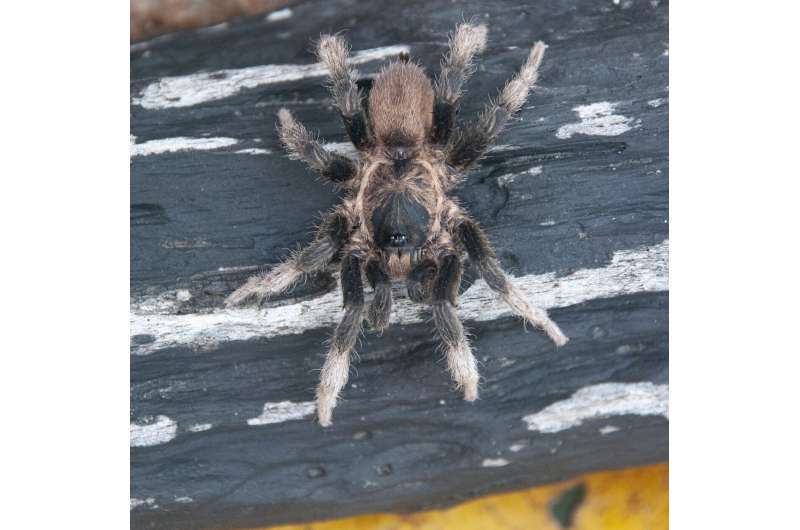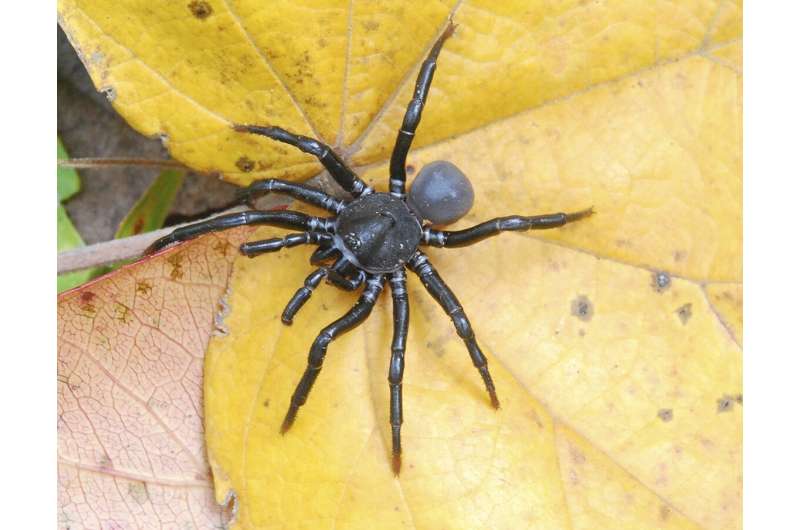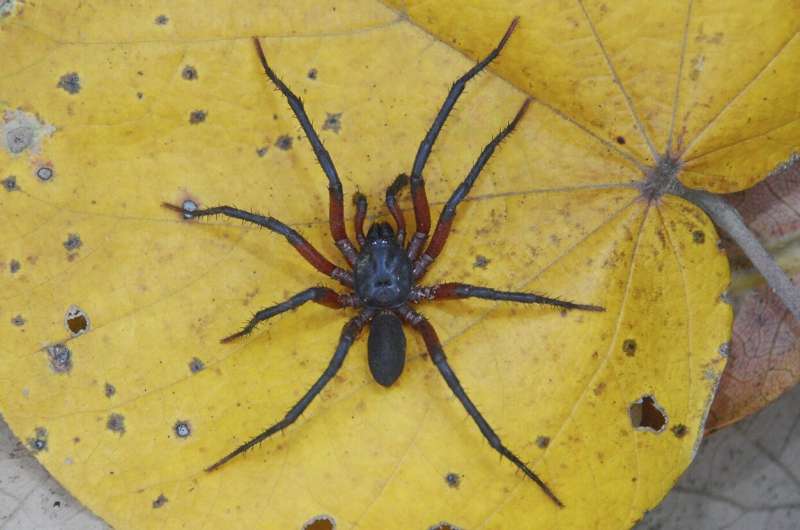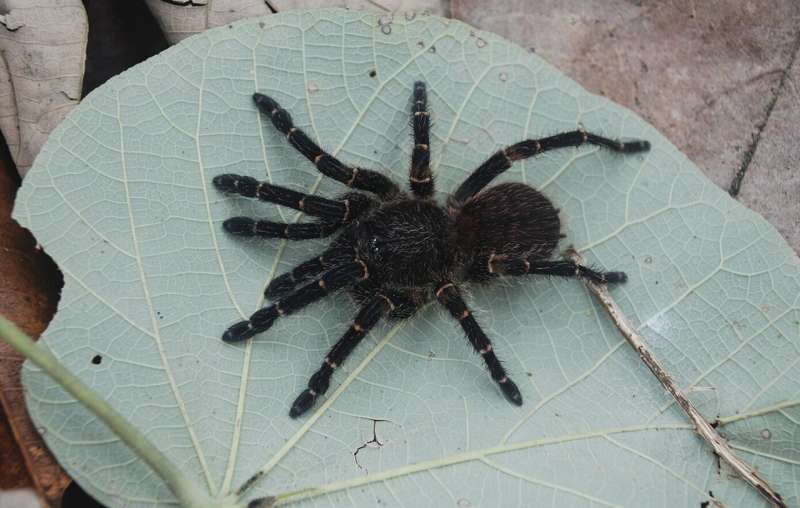This article has been reviewed according to Science X's editorial process and policies. Editors have highlighted the following attributes while ensuring the content's credibility:
fact-checked
peer-reviewed publication
trusted source
proofread
Expedition uncovers four new tarantula species in Colombia's biodiversity hotspot

The Colombian Pacific region, nestled within the heart of the Chocó Biogeographic Region, has unveiled some of its remarkable biological wonders. Recognized as one of the world's most enigmatic biodiversity hotspots, this area has remained largely unexplored, particularly when it comes to spider diversity.
A groundbreaking biological expedition, conducted at the Jardín Botánico del Pacífico (JBP) in Bahía Solano, has revealed some taxonomic novelties that are set to redefine our understanding of this captivating ecosystem. The area not only serves as a tourist attraction but also plays a pivotal role in the conservation of the tropical rainforests and mangroves in the region.
Led by a team of dedicated researchers, the study focused on Mygalomorphae spiders, aiming to shed light on their intricate world. This enigmatic spider group includes tarantulas, trapdoor spiders, funnel-web spiders, millimeter-sized spiders with little use of the silk, and bald-legged spiders with the ability to attach substrate to their bodies. They are predatory, mostly terrestrial, and very often have restricted geographic distributions and high levels of endemism.
In this first-of-its-kind exploration of the Colombian Pacific rainforest, the team discovered and documented four remarkable spider species. One of them is Ummidia solana, an exceptional trapdoor spider. Additionally, the researchers identified three species of tarantulas: Euthycaelus cunampia, Neischnocolus mecana, and Melloina pacifica.
"These taxonomic breakthroughs represent the first recorded instances of their respective genera in the region, expanding their geographical distribution. Each species was meticulously illustrated, described, and scientifically discussed, offering valuable insights into their morphological characteristics, taxonomy, and biogeography. The results of this study serve as a significant contribution to our understanding of the region's biological diversity, known for its exceptional species richness and endemism," say the researchers.

Ummidia solana, derived from the municipality of Bahía Solano, captures the essence of the stunning Colombian Pacific coast, with its mesmerizing landscapes and abundant vegetation. This discovery also marks the first record of the Ummidia genus within the Chocó Biogeographic Region.

Melloina pacifica, named after the Colombian Pacific region it inhabits, represents the first described species of the Melloina genus in Colombia. While Melloina is known to thrive in diverse ecosystems, including caves, this specific record expands the genus' known distribution, previously documented solely in Venezuela and Panama.
Euthycaelus cunampia pays tribute to Don José and Don Antonio, members of the Emberá indigenous community from Mecaná, Chocó. Their transition from hunting traditions to becoming touristic and academic guides for the JBP inspired the species name. Notably, this discovery marks the first published record of the Euthycaelus genus and the subfamily Schismatothelinae outside the Andean Region and Eastern Cordillera for Colombia.

Lastly, Neischnocolus mecana, named after a township in Bahía Solano, underscores the commitment of the Jardín Botánico del Pacífico community to conserve the region's rich biodiversity. This is the fourth described species of the Neischnocolus genus in Colombia and represents its first record in the Chocó biogeographic region and the Colombian Pacific. Notably, this description expands the known geographic range of the genus.
"This groundbreaking study serves as a testament to the potential existence of undiscovered species and the need for comprehensive taxonomic research," the scientists say in conclusion.
The findings are published in the journal ZooKeys.
More information: Mariana Echeverri et al, Four new species of mygalomorph spiders (Araneae, Halonoproctidae and Theraphosidae) from the Colombian Pacific region (Bahía Solano, Chocó), ZooKeys (2023). DOI: 10.3897/zookeys.1166.101069
Journal information: ZooKeys
Provided by Pensoft Publishers





















